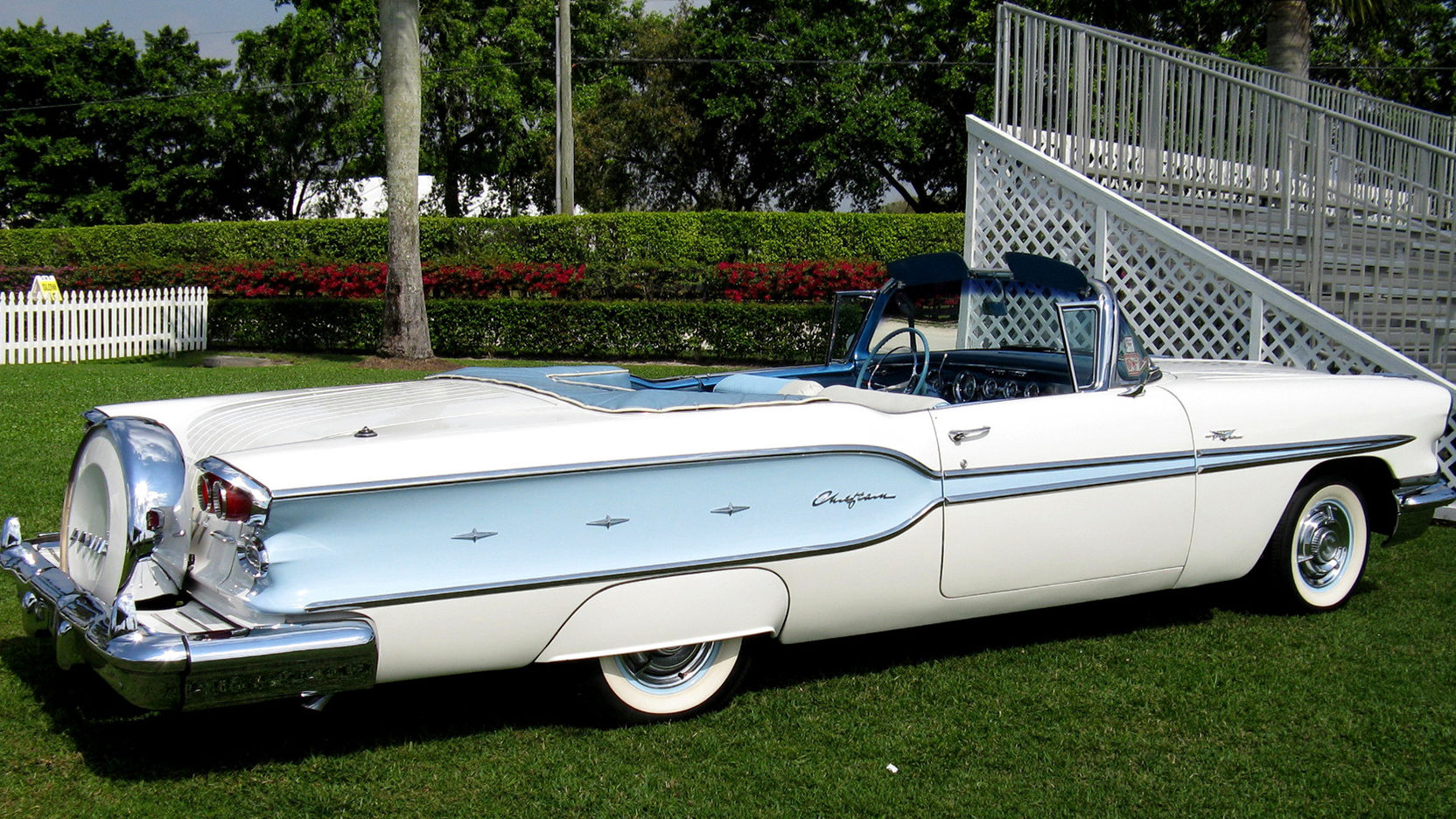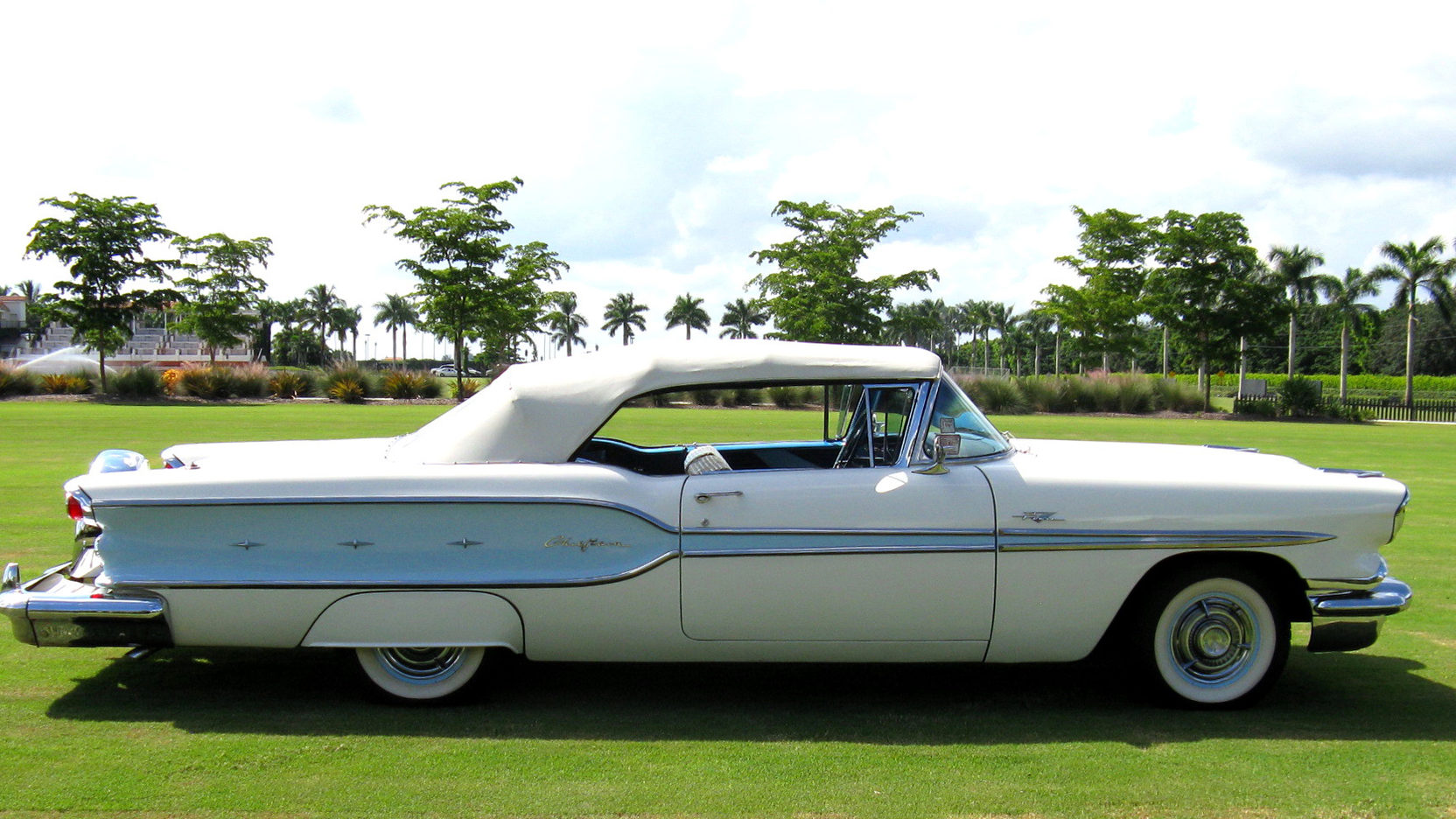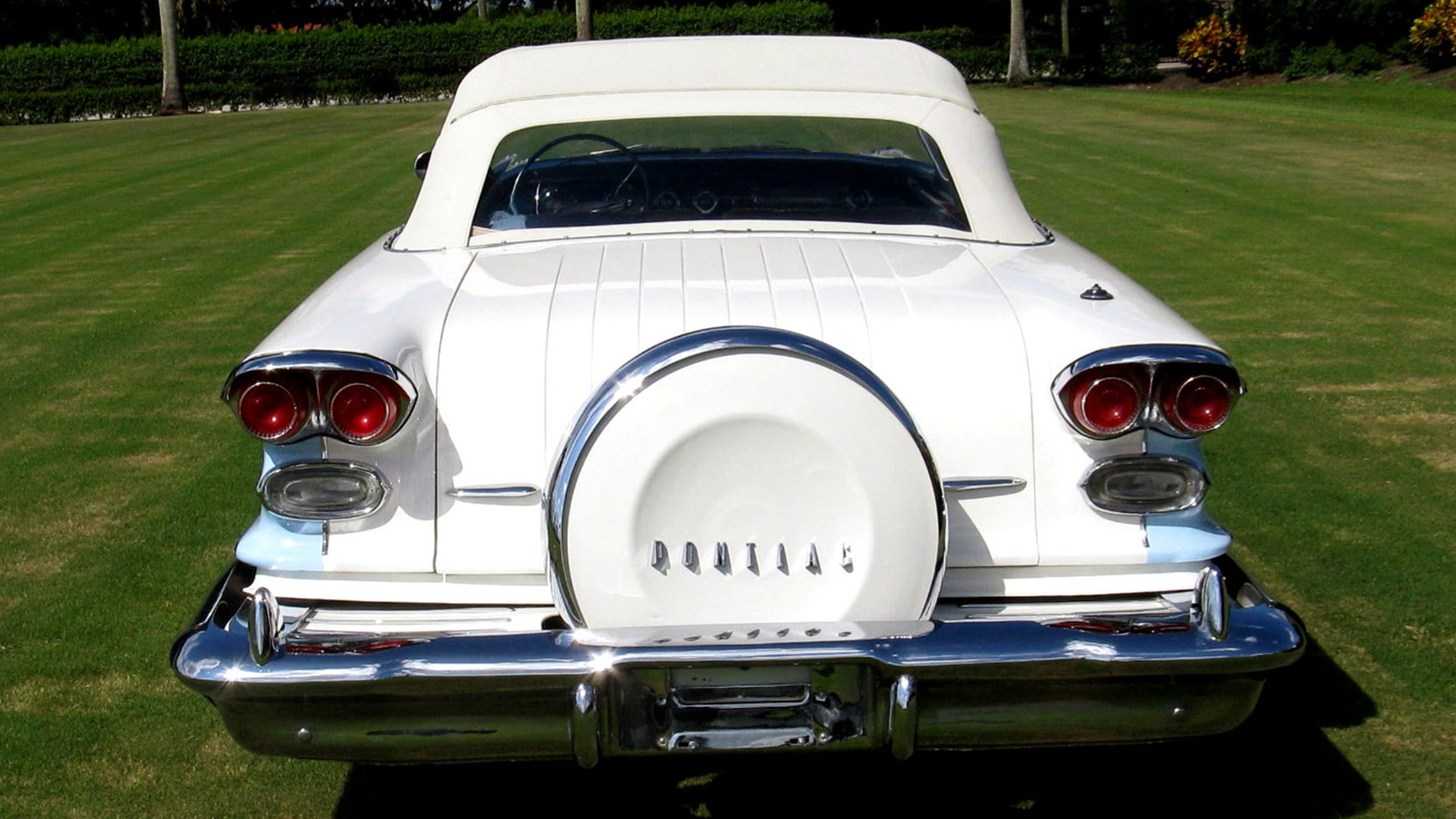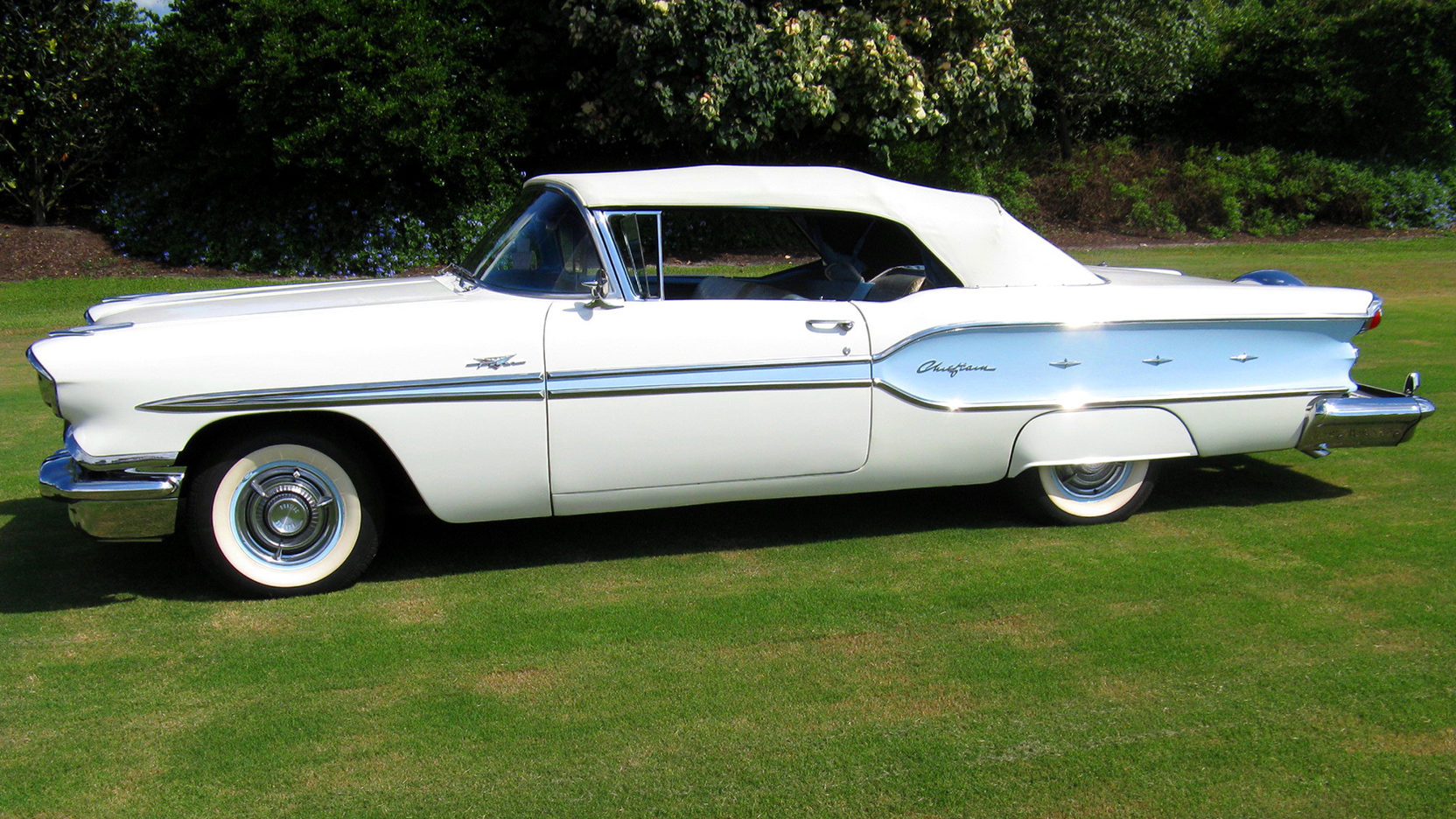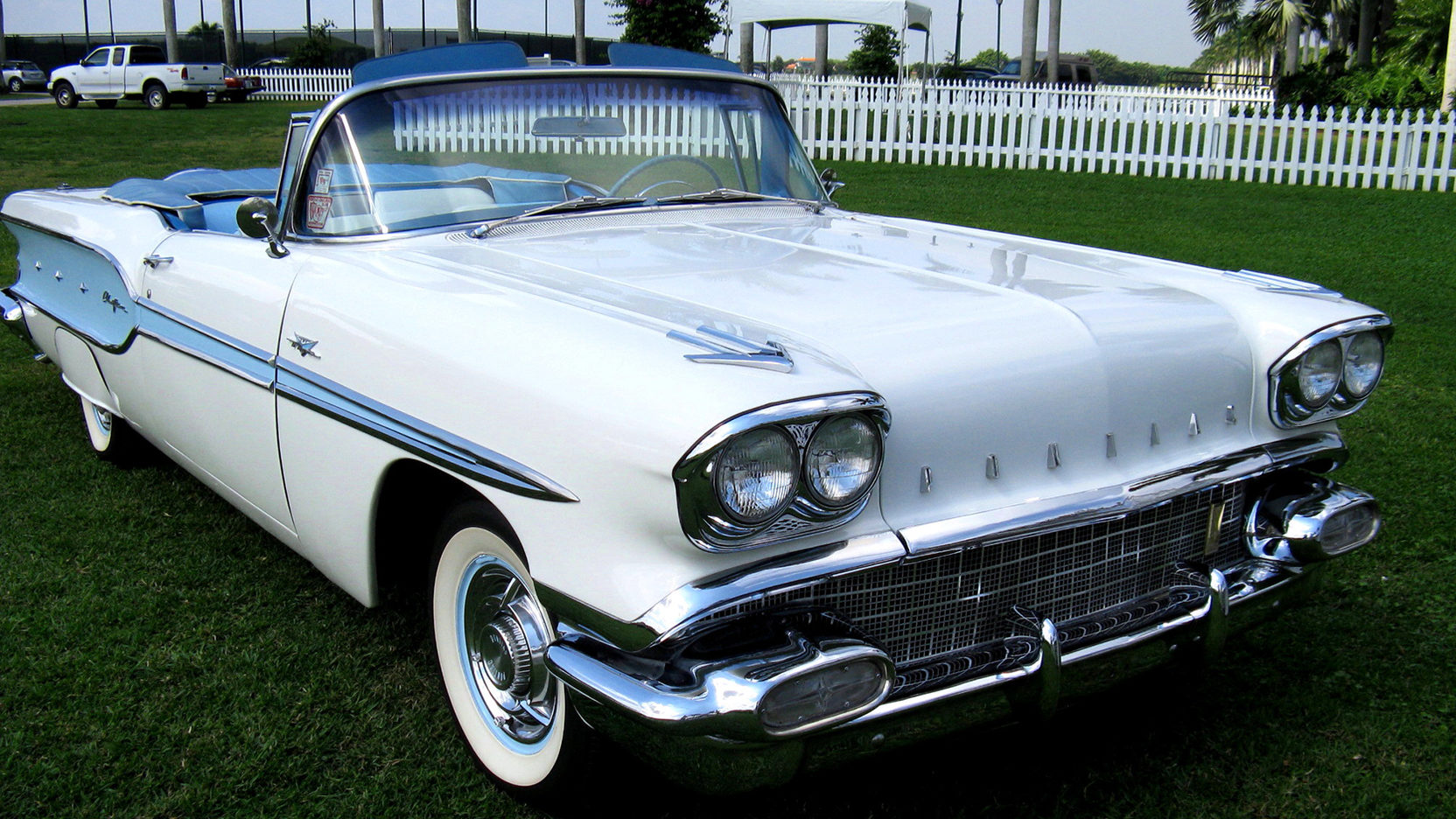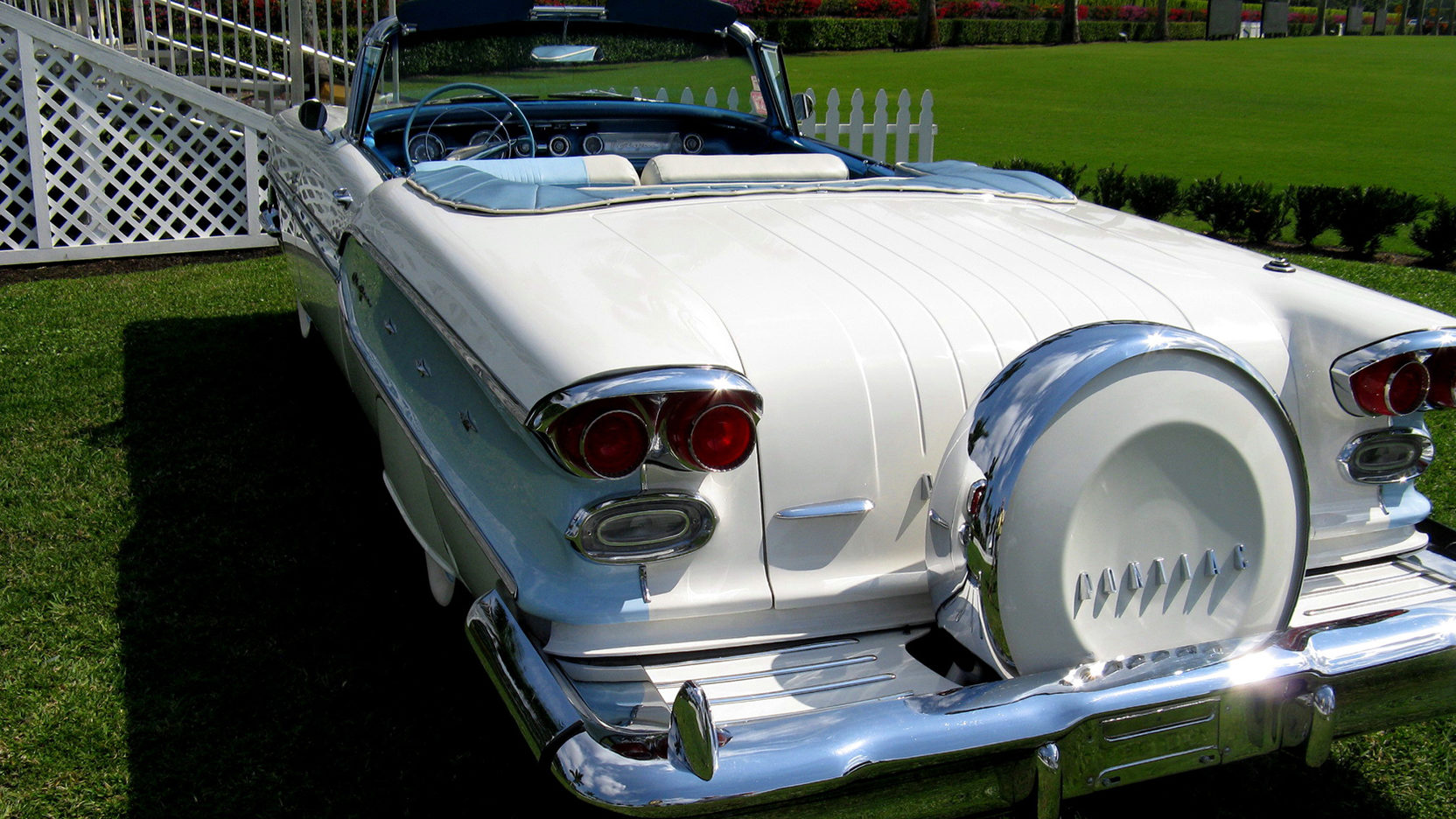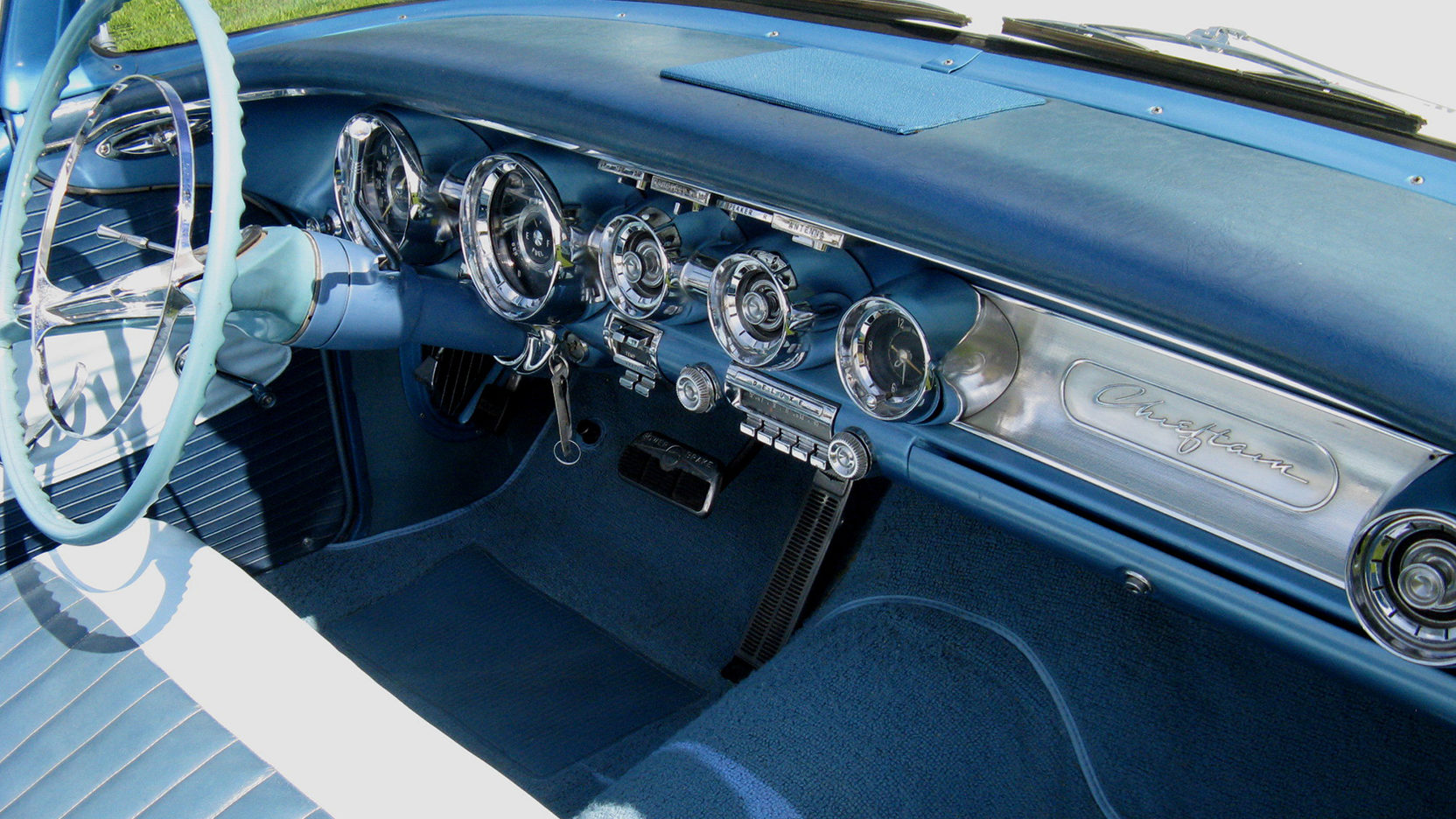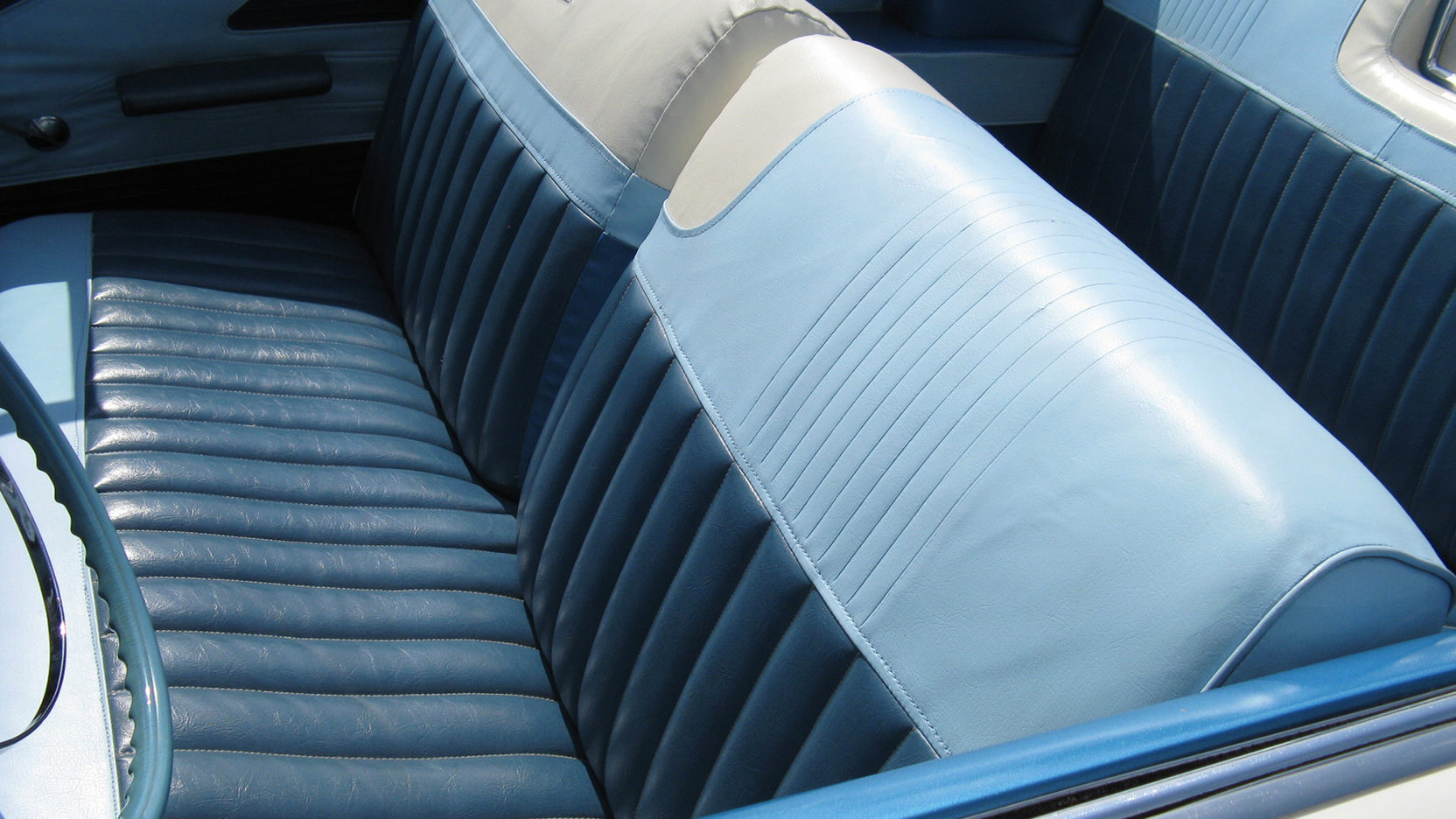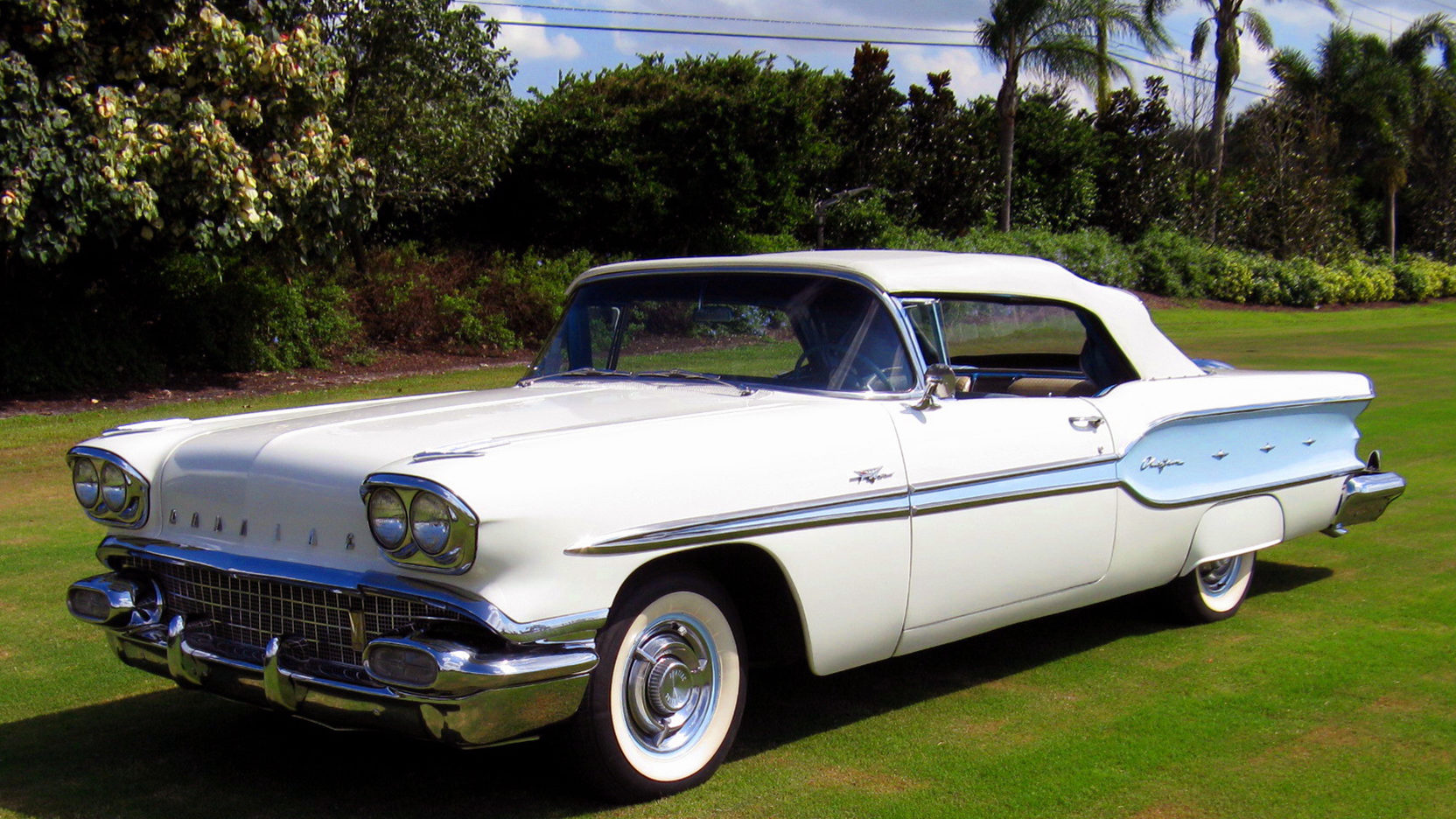1958 Pontiac Chieftain Convertible NO 23
Highlights:
- Two Tone White and Blue paint
- Two-tone blue interior with matching convertible boot
- 1 L OHV V-8 Engine
- 370 cid Displacement – 270 hp
- Tri-power setup
- Automatic Transmission
- Chromed mesh front grille
- Front and rear bumper guards
- Painted steel wheels with full size wheel covers
- Wide-Whitewall tires (AKA: Gangster Whites)
- New-for-1958 quad headlights with afterburner tail lights
- Continental spare tire kit
- Fender Skirts
- Tinted glass
- Push button radio with power antenna
- Chrome gauge bezels with control switches
- Fuel, generator, oil pressure and tempreure gauges
- Power Steering
- Power Brakes
Pontiac Motor Car Company
Founded in 1907 as the Oakland Motor Car Company in Pontiac, MI., it was merged into General Motors Corp by William C Durant in 1908 when the original founder died. A solid car throughout its run, one of its most recognizable models was the 1929 “Oakland All American Six” as seen in the Lang Collection. It was advertised as “a six for the price of a four.” The Pontiac name plate had been introduced as a sub-series in 1926 and by 1932 the Oakland name plate was absorbed into the Pontiac line.
Under GM President Alfred Sloan’s direction of a car for every pocket book, Pontiac was slotted above Chevrolet and below Oldsmobile. In 1955 under new Pontiac Manager Bunkie Knudson, Pontiac began to market itself as a performance or road car. First was the “Wide Track Pontiac” and in 1962 the sporty Grand Prix, in 1963 the LeMans, the GTO of 1964 starting the Muscle Car Era leading to the sporty Firebird. This program was so successful that the whole Pontiac line up was named Motor Trend Magazine’s Car of the Year in 1965.
We are privileged to have, in the Lang Collection, an example of a pristine 1958 Pontiac Chieftain Convertible that started it all. This model features the 370 cid Tri-Power set up. It is a US built car. Starting during this period of time of (from 1958 to 1986) Pontiacs sold in the US and in Canada were different vehicles. For instance, in 1958 the top of the line Pontiacs in the US were the Bonneville and Chieftain both sharing the GM “A” Body having a wheelbase of 122 in. with Pontiac engines and drive lines. While in Canada that same year, the Laurentian’s and the Parisienne’s were built on the Chevy “X” body with a 119 in wheelbase and featuring Chevy engines and drive lines. There were very good reasons for this.
First, any cars and /or parts for those cars imported into Canada during those years were subject to a rather stiff tariff. Being that the production of both the Chevrolets and Pontiacs came from the same GM of Canada Oshawa Assembly plant, it was easier and far cheaper to use only the Chevy engines and chassis. Second, Canada was a much smaller market at the time than the US making it harder to spread production (and tariff) costs around. Gas also cost more in Canada making it more economical for consumers to run the lighter, more efficient Chevy engines in the lighter “X” body. And lastly, many dealers in Canada at this time were combination dealerships selling both Chevy and Pontiac. Having the same engine, drive line, et al, in both cars lessened both the number and value of parts that dealers had to carry in inventory. The result was a win – win; for years Pontiac sales ranked number three in Canada behind perennial leaders Chevy and Ford. This contrasted to the US market where Pontiac sales lagged behind even Oldsmobile and Dodge-Plymouth.
But as the economy changed over the years, Sloan’s car for every pocket-book became more and more mute. Pontiac was losing market share. Finally on April 27, 2009 GM announced that the Pontiac name plate would be dropped from production and all remaining inventory would be phased out by the end of 2010. The last model, a G6 was built in January 2010. Though production and franchise agreements ended in 2010, Pontiac remains a registered and active trademark of GM. We may see it again.
This immaculate example of a 1958 Chieftain Convertible now seen in the Lang Collection is a reminder of the glory that was Pontiac in its heyday. Although we may see a Pontiac in the future, we will never see anything like this vehicle again.

